Blog
The 9 Truths About Online Shoppers
Every day consumers encounter347ads pitching them a whole range of products.
Of the 50 odd products they may find interesting…

…they’ll *maybe* buy 1.
On what basis are shoppers rejecting 49?
– Are they creating a pros and cons list?
– Is their evaluation process scientific?
– Are they truly considering all variables?
– Does the best product always win?
The answer, typically, is no.
What’s certain is that some system is being used to make the purchase decision.
We’ve been studying this system for 16 years and have identified 9 variables shoppers use to decide what to buy.
We call them the 9 truths about online shoppers.
Consider the impact if your product pitch covered these 9 truths.
This research wasn’t cheap. We’d like to thank the 118 DTC brands that funded $2️⃣.9️⃣ million for this exploration.

Let’s get to the 9 truths.
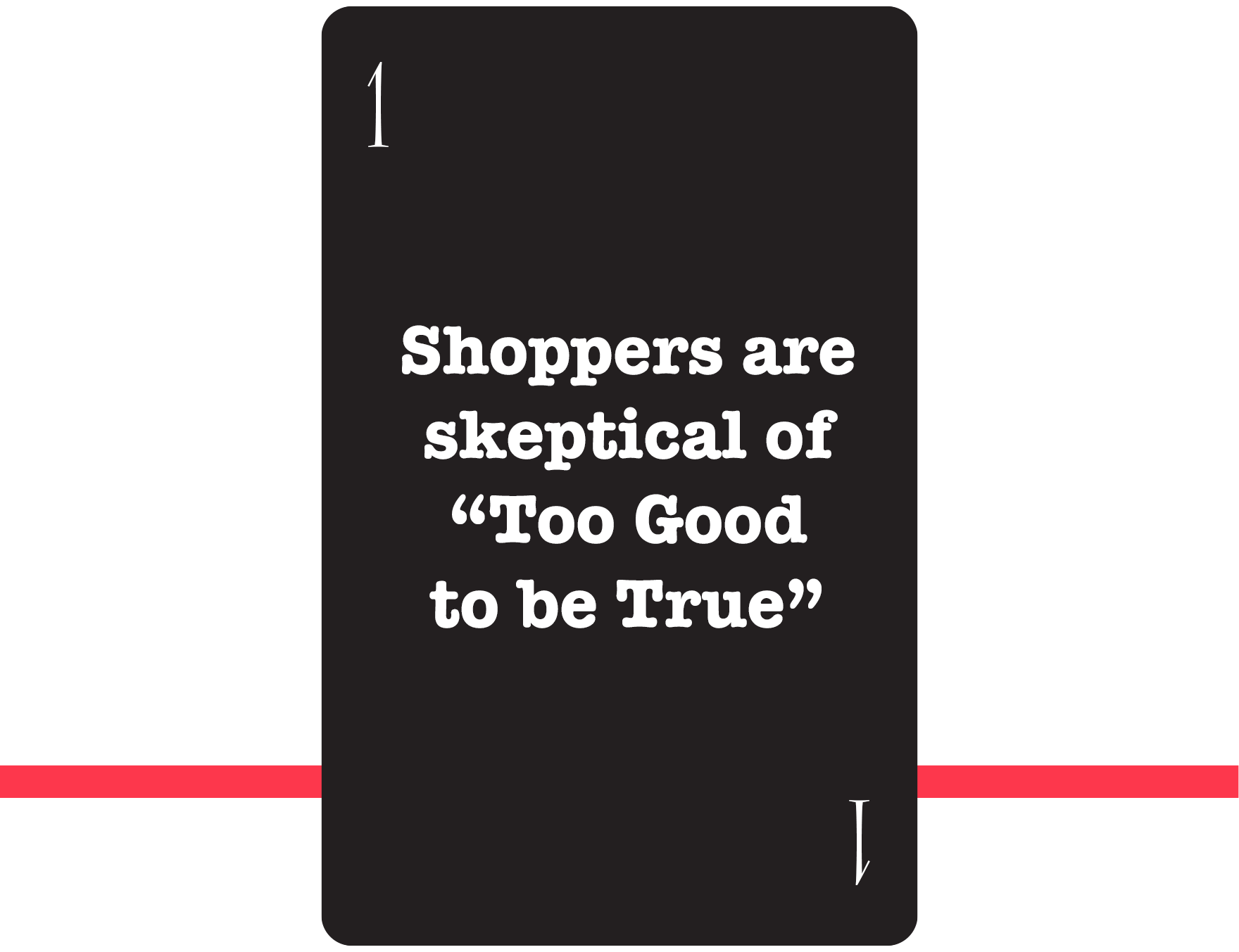
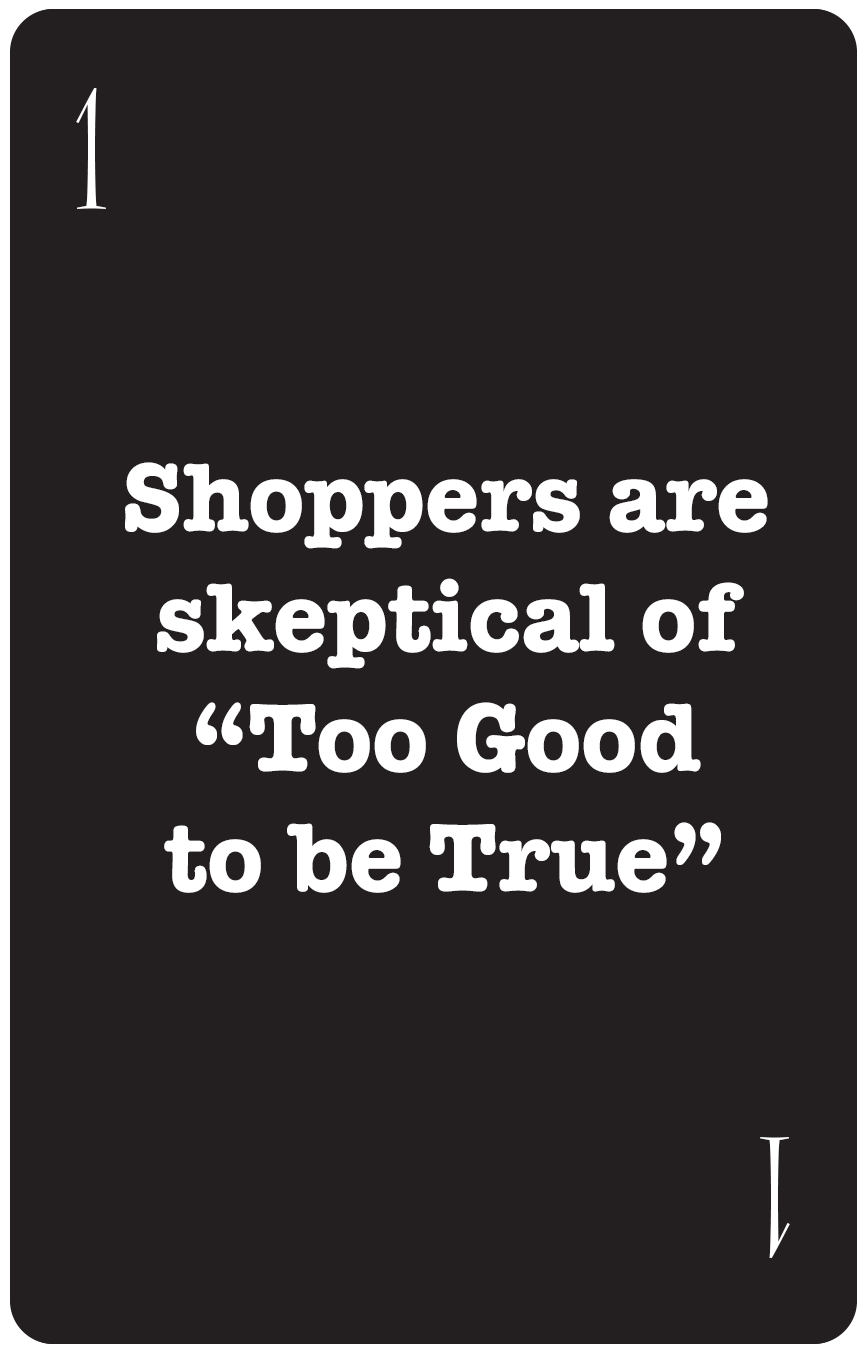
Marketing runs on claims. Claims like “removes 99% of air dust.”
Trouble is, shoppers have seen so many claims they’ve become skeptical.
Your sales pitch is like a chain of trust links.

When the shopper encounters an unbelievable statement, it creates a trust gap. That gap is a conversion killer.
So, the marketer needs to scan the pitch, sniff out anything that sounds too good to be true, and add an extra explanation to address the reader’s skepticism.
To dig deeper into this topic, read this article: Too Good to Be True.
Was this section about 'too good to be true' clear? /
🙌
Uh oh! Let's get in touch so I can explain this better.
We'll talk soon!
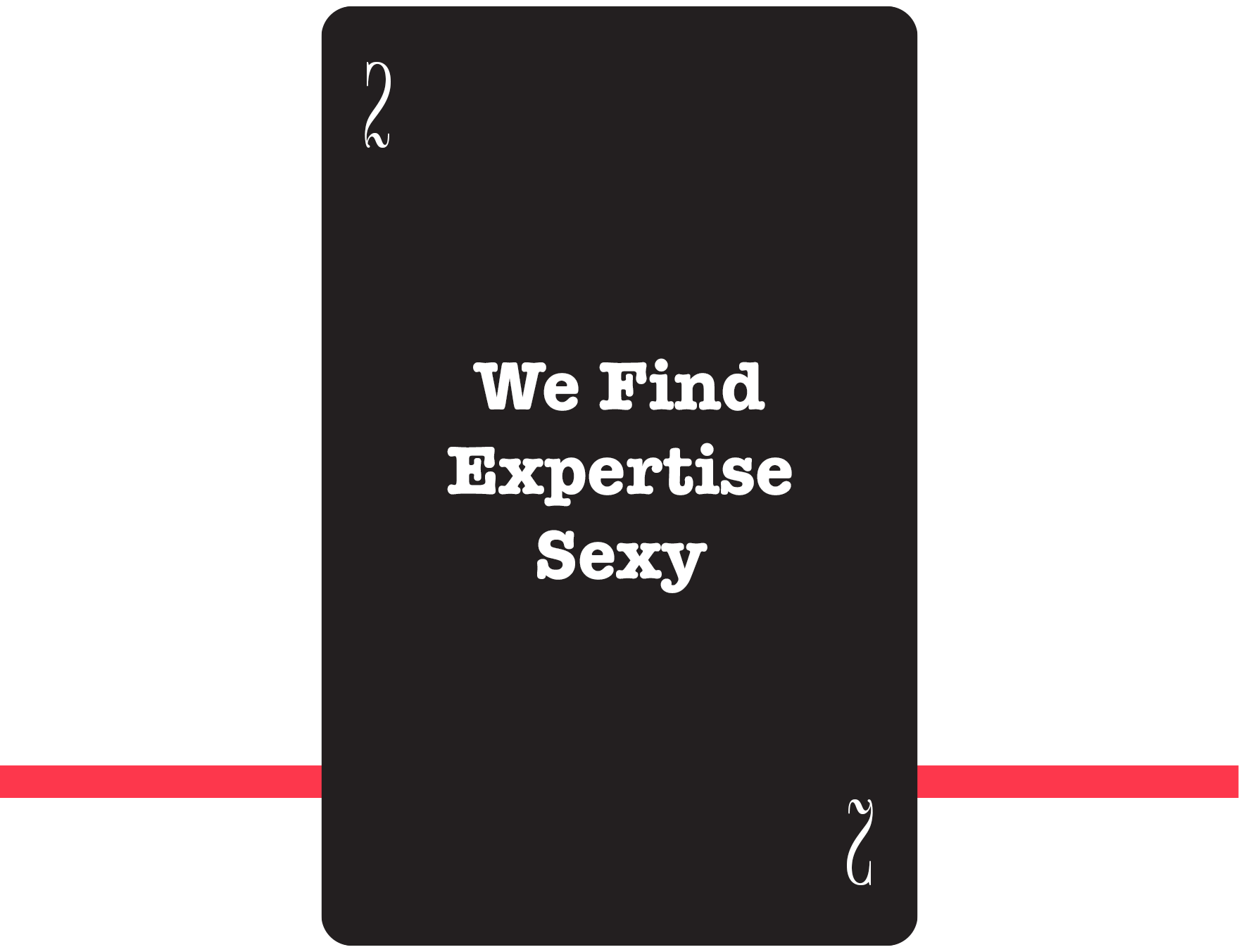

We live in a highly specialized world, and shoppers want to buy from experts.
It helps to think of our relationship with doctors. When I visit mine, I pay close attention to everything the doctor says. And while I have the final say, there is no confusing who the expert is.
Your visitors need to see that for every 10 minutes they’ve spent thinking about this problem, you’ve spent 10 hours.
The buyer has to see disproportionate value. Here’s the math:
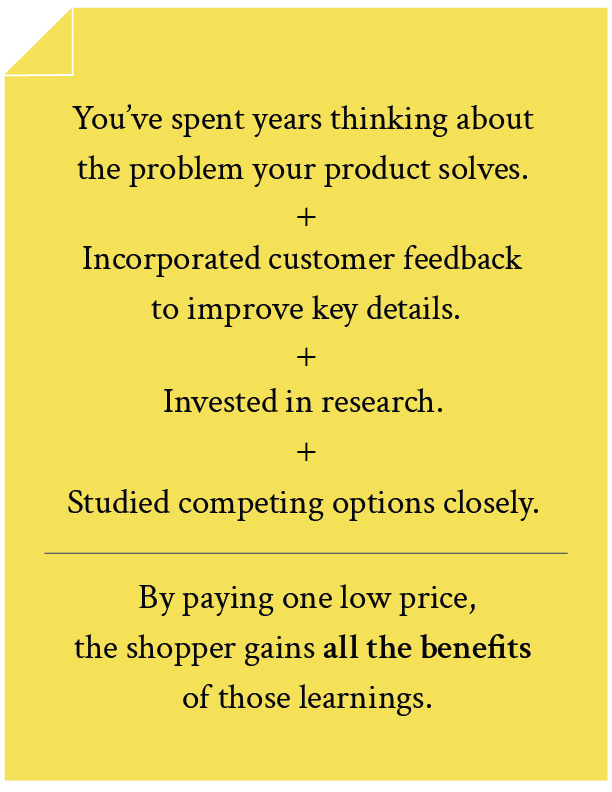
This expertise strategy isn’t used much by brands, which is why you need to jump on it.
Many avoid using it because they confuse expertise with talking down to the reader.
Don’t talk down to the reader.
Yes, we want to demonstrate expertise, but not using arrogance or overconfidence.
The vibe you’re looking for is this:
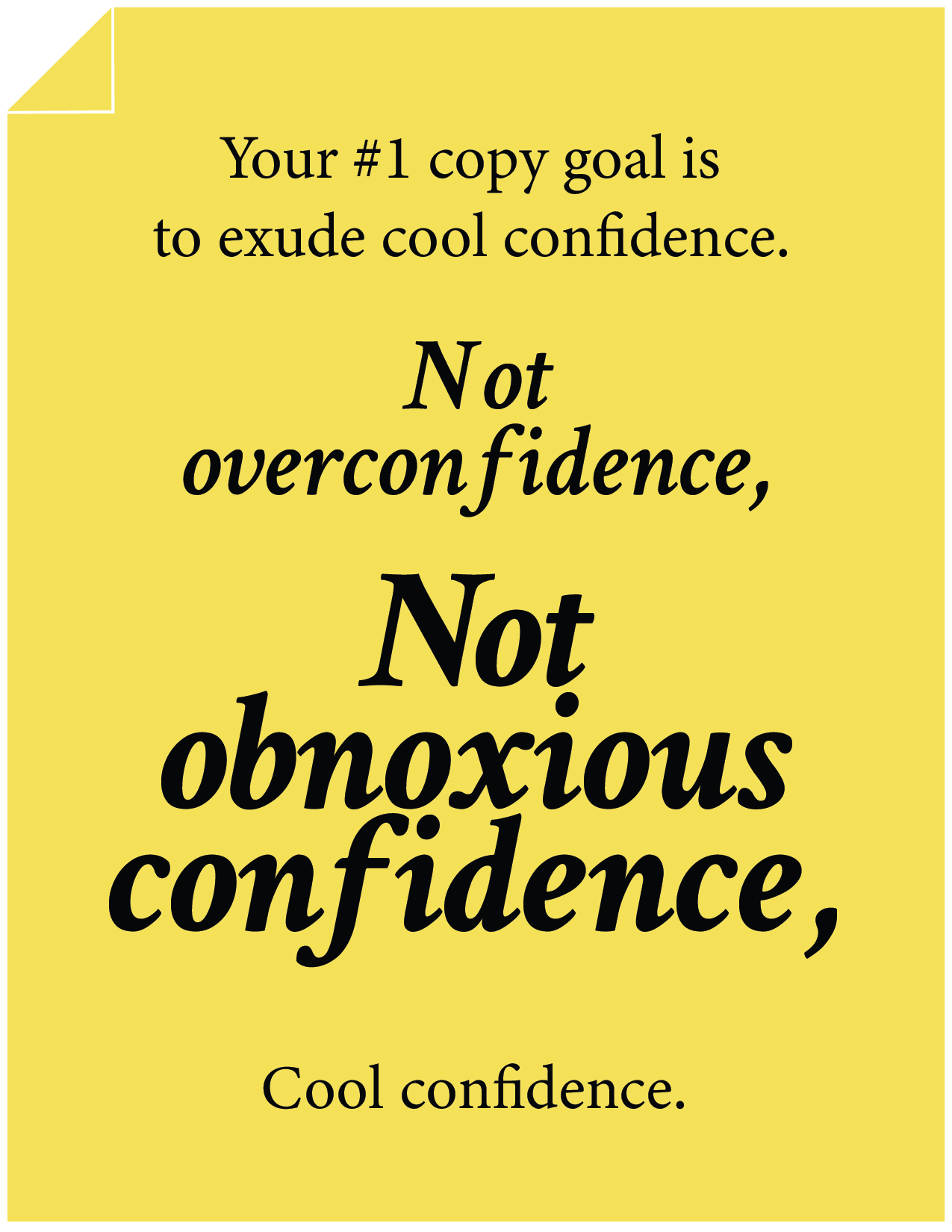
A practical example of how to use this strategy: Demonstrate Expertise Example.
In this expertise section we covered a bunch of ideas. Were they all clear? /
🙌
Thanks for speaking up. Let's get in touch so I can explain this better.
We'll talk soon!

Since you're liking this 9 truths about online shoppers article you're gonna love the conversion ideas I share in my weekly newsletter. Signup below. If it isn't as good as I'm making it sound unsubscribe with one click.
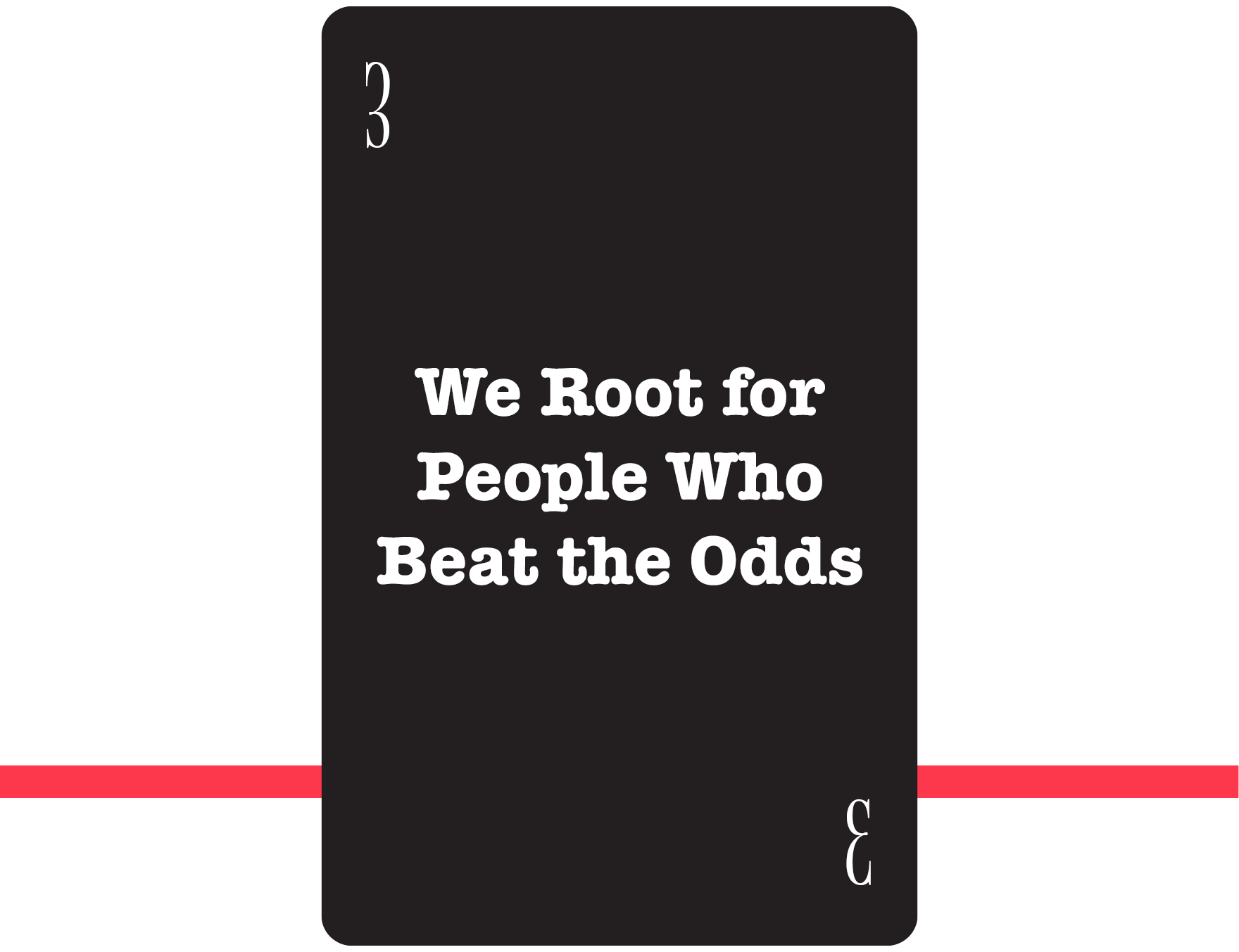
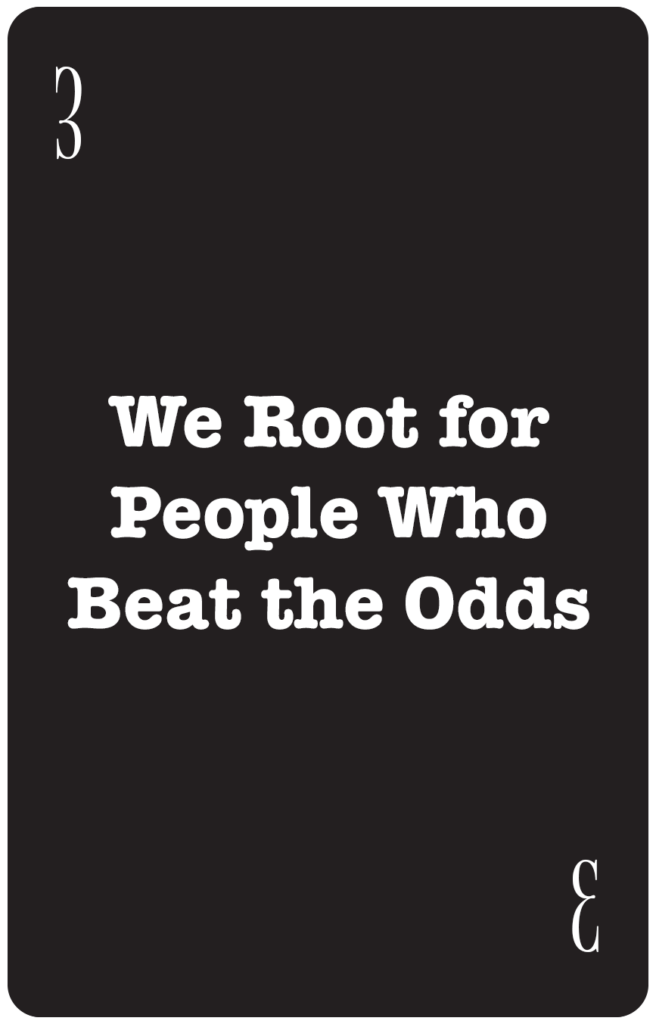
Shoppers are drawn to stories where the brand encounters and overcomes 🏔️ a challenge.
The value we place on something is proportional to the effort that goes into producing it. It’s a psychological principle called Labor Illusion.
And it’s why thuma.co makes it a point to communicate the effort that goes into their beds:

Tiege.com also uses this technique:
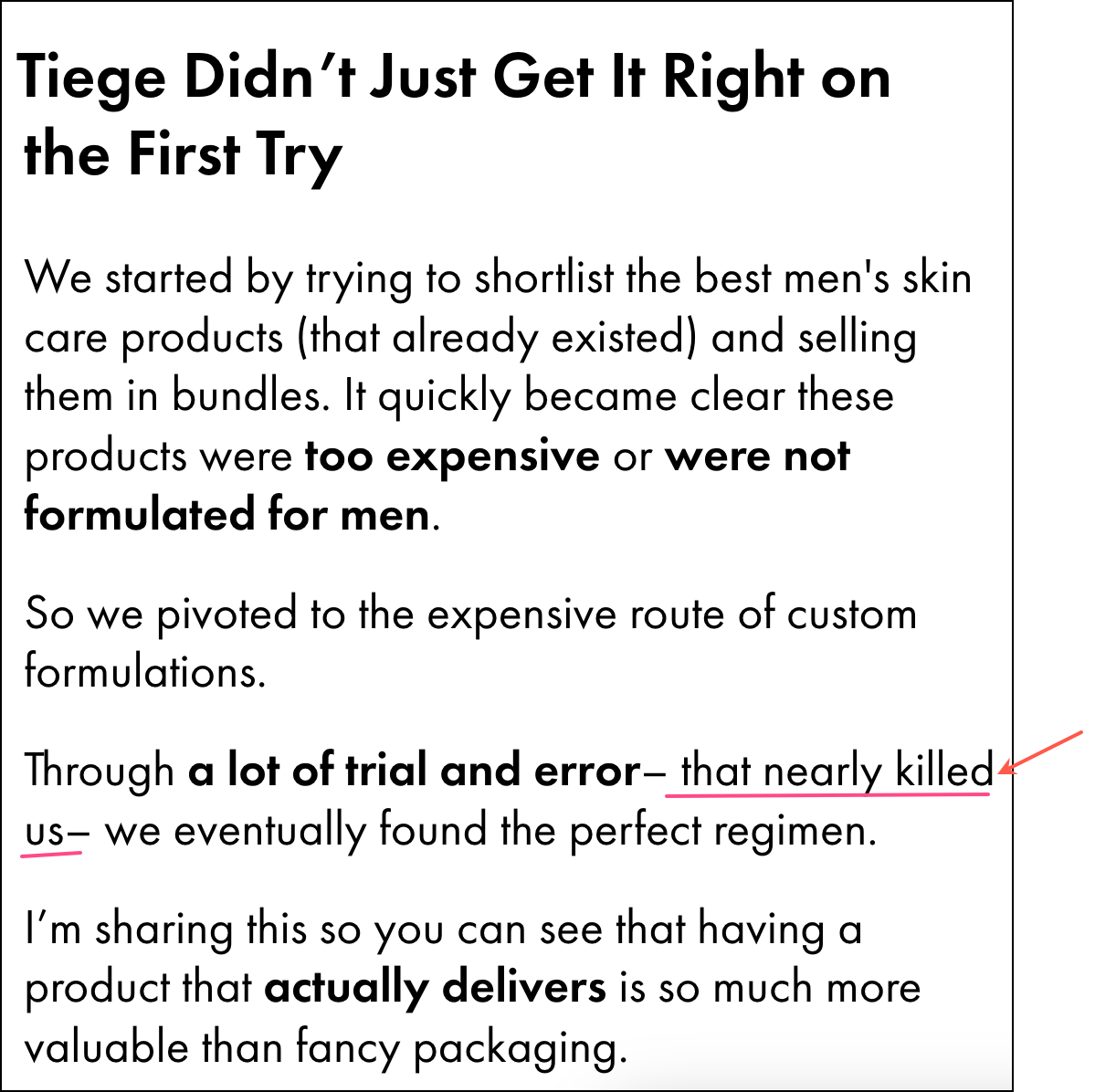
We A/B tested this on Tiege.com, and it resulted in a 19.54% sales lift.
How you can apply this on your site— Reflect on your journey using this story formula:
“We started in this direction, thought it would be easy, encountered a challenge, nearly gave up, and, in the end, solved it.”
Was this concept of rooting for people who beat the odds explained properly? /
🙌
Uh oh! Let's get in touch so I can explain this better.
We'll talk soon!
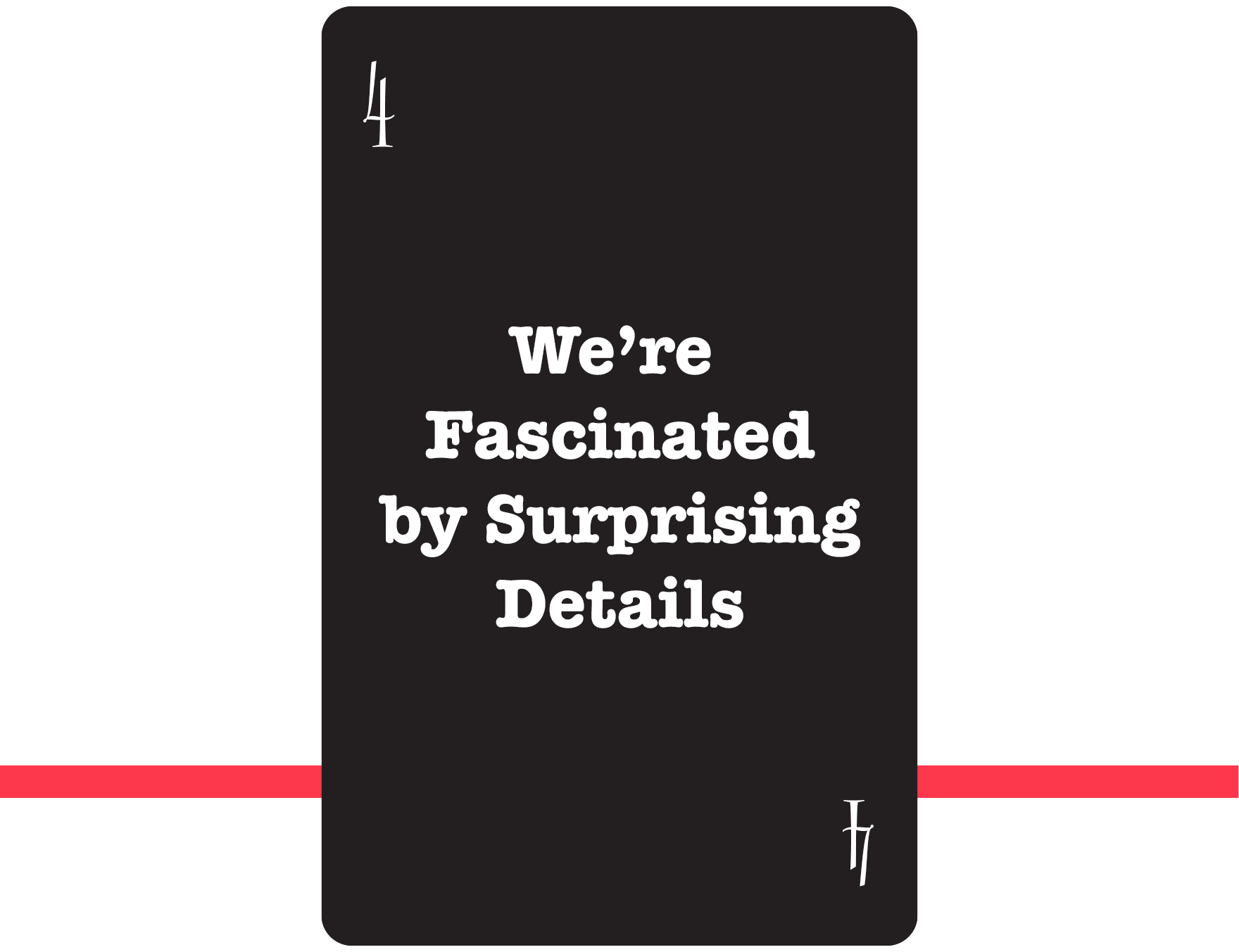
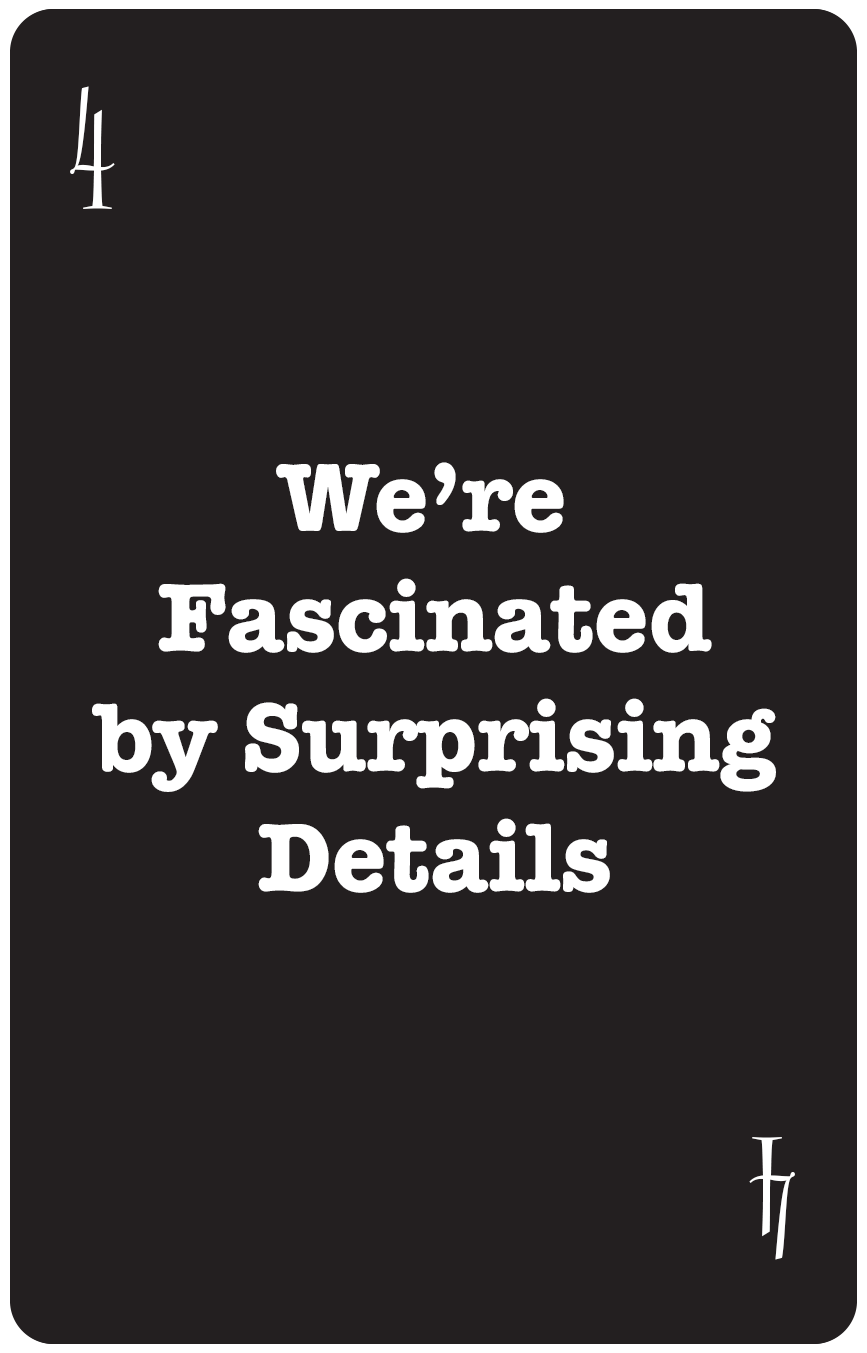
My goal is to get the shopper to read my entire pitch because those who read the whole pitch are 10x more likely to buy 🆚 those who quit reading in the middle.
To maintain the reading momentum I sprinkle in interesting facts.
An Example
Say I’m working for a brand that improves indoor air quality (we did).
To unearth surprising details, I’d ask ChatGPT things like:
— “Surprising details about indoor air quality”
— “What do most buyers not know about home air quality?”
— “Is indoor air quality getting worse?”
You are looking for fascinating facts that are:
- Little known
- Easy to understand
- Counter-intuitive
Your feedback matters. Was this section about surprising details clear? /
🙌
Uh oh! Let's get in touch so I can explain this better.
We'll talk soon!
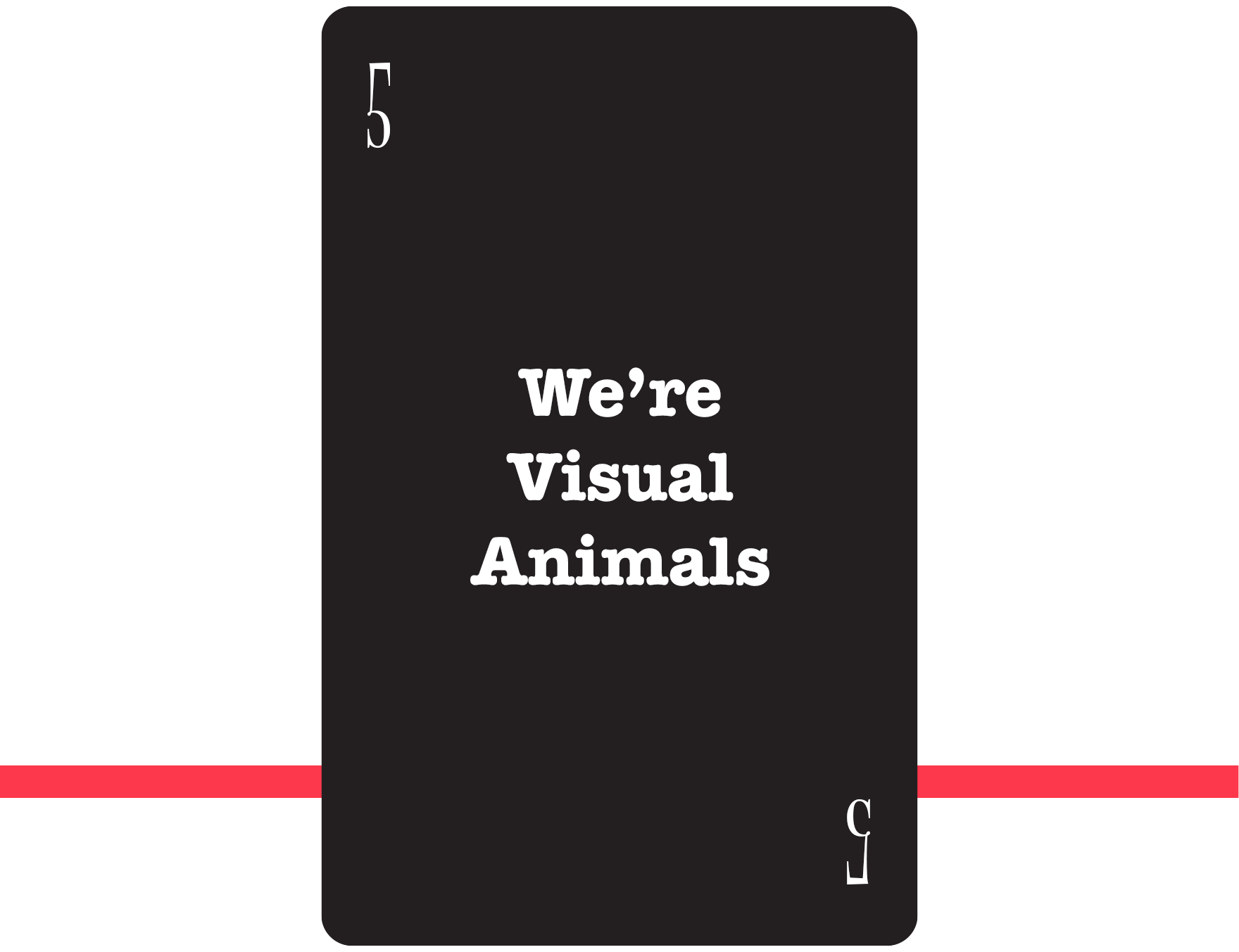
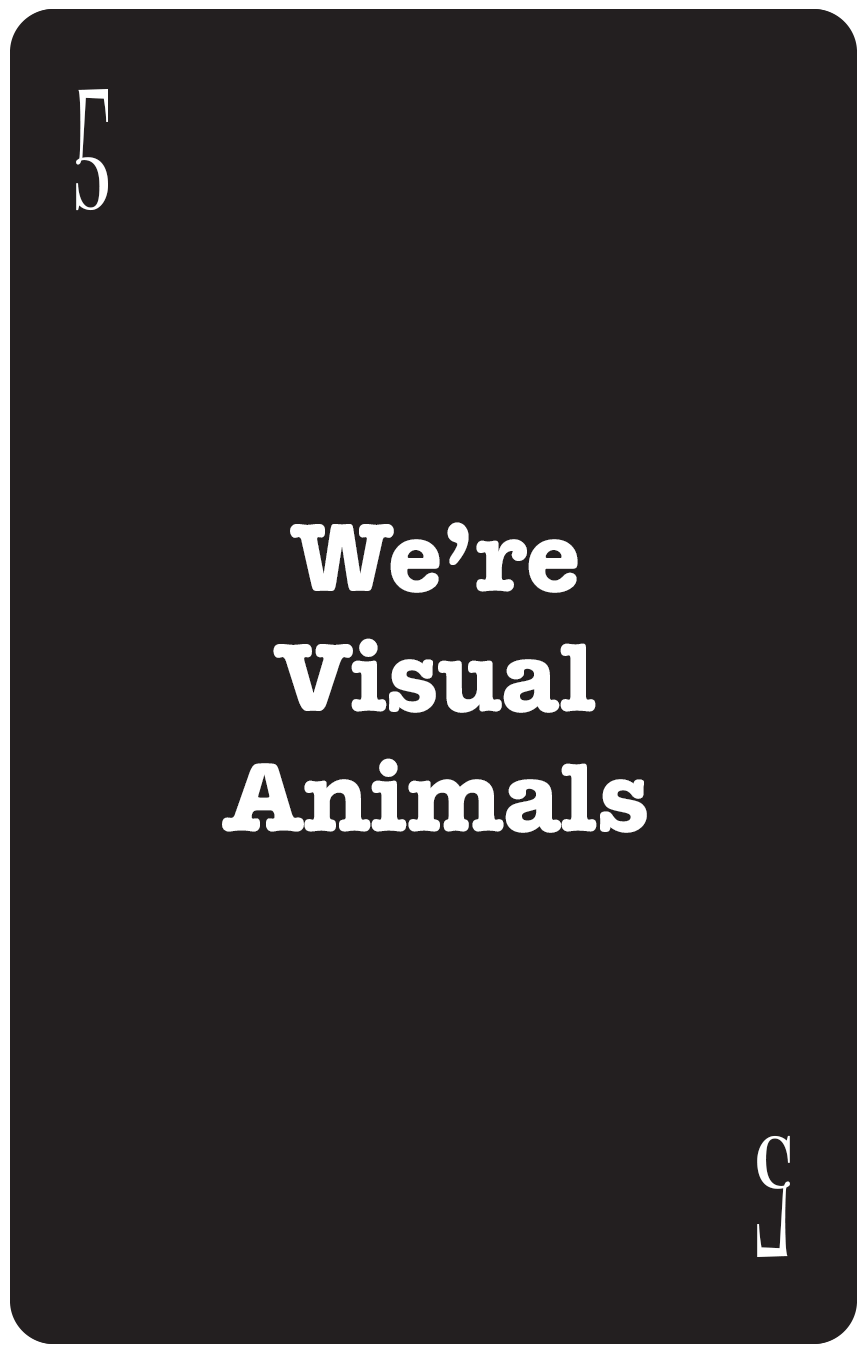
A surprising neuroscience discovery is that 33% of the brain’s cortex is involved in vision (source).
What this means to the marketer: To maximize conversions evoke mental images.
Help buyers imagine owning/using the product. Help them visualize the pain of the problem. The clearer the visual, the higher the likelihood of them buying from you.
Card found in a hotel bathroom:
MGM Resorts has saved 794 million gallons of water in the past five years, the equivalent of 1,200 Olympic-sized swimming pools.
Did the swimming pool image flash into your mind? Without the aid of a photo, the writer was able to evoke a mental image.

Since you're liking this 9 truths article you're gonna love the conversion ideas I share in my weekly newsletter. Signup below. If it isn't as good as I'm making it sound unsubscribe with one click.
To dig deeper into this topic, read this article: The Power of Visualization.
Was this section about the power of evoking mental visuals clear? /
🙌
Uh oh! Let's get in touch so I can explain this better.
We'll talk soon!
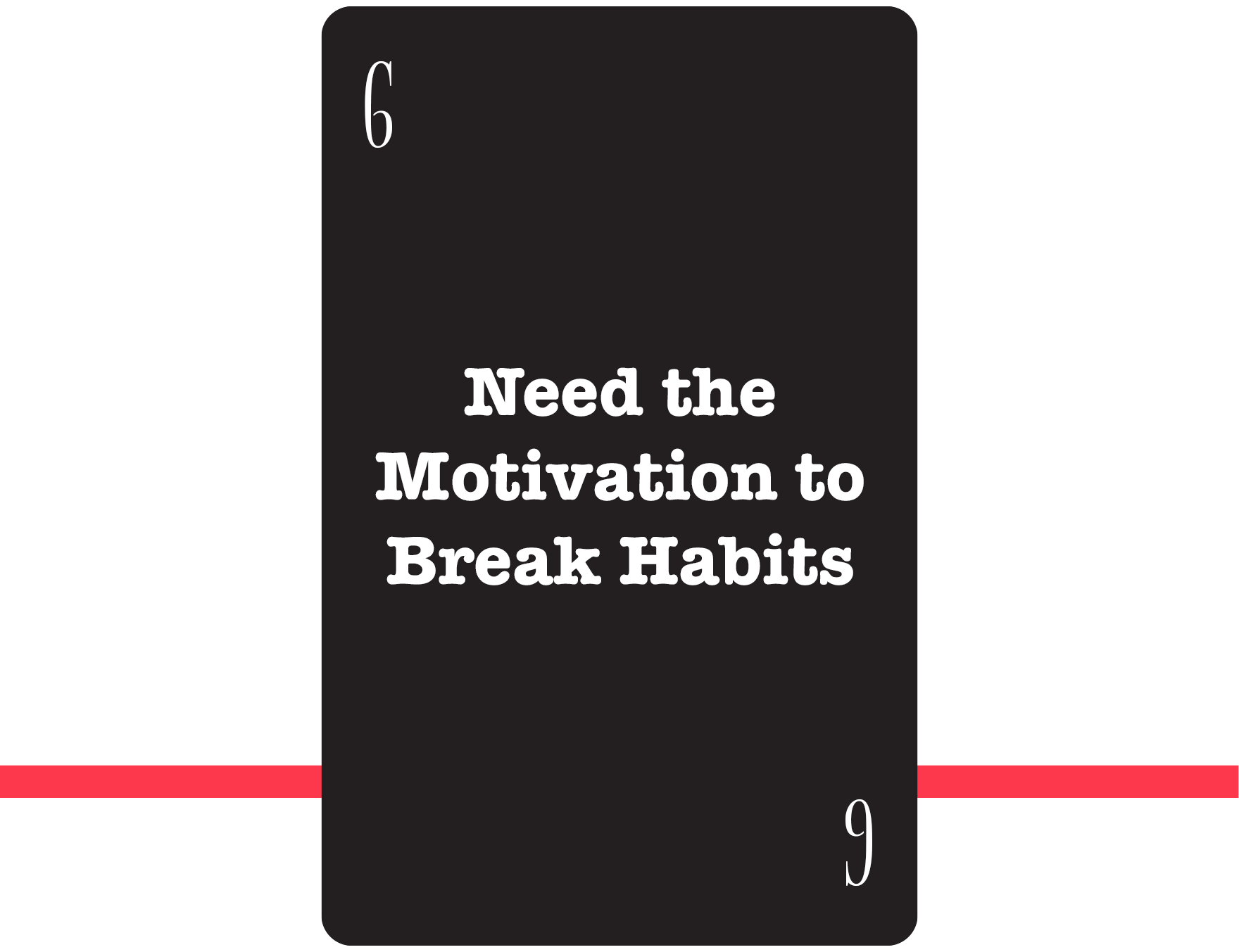
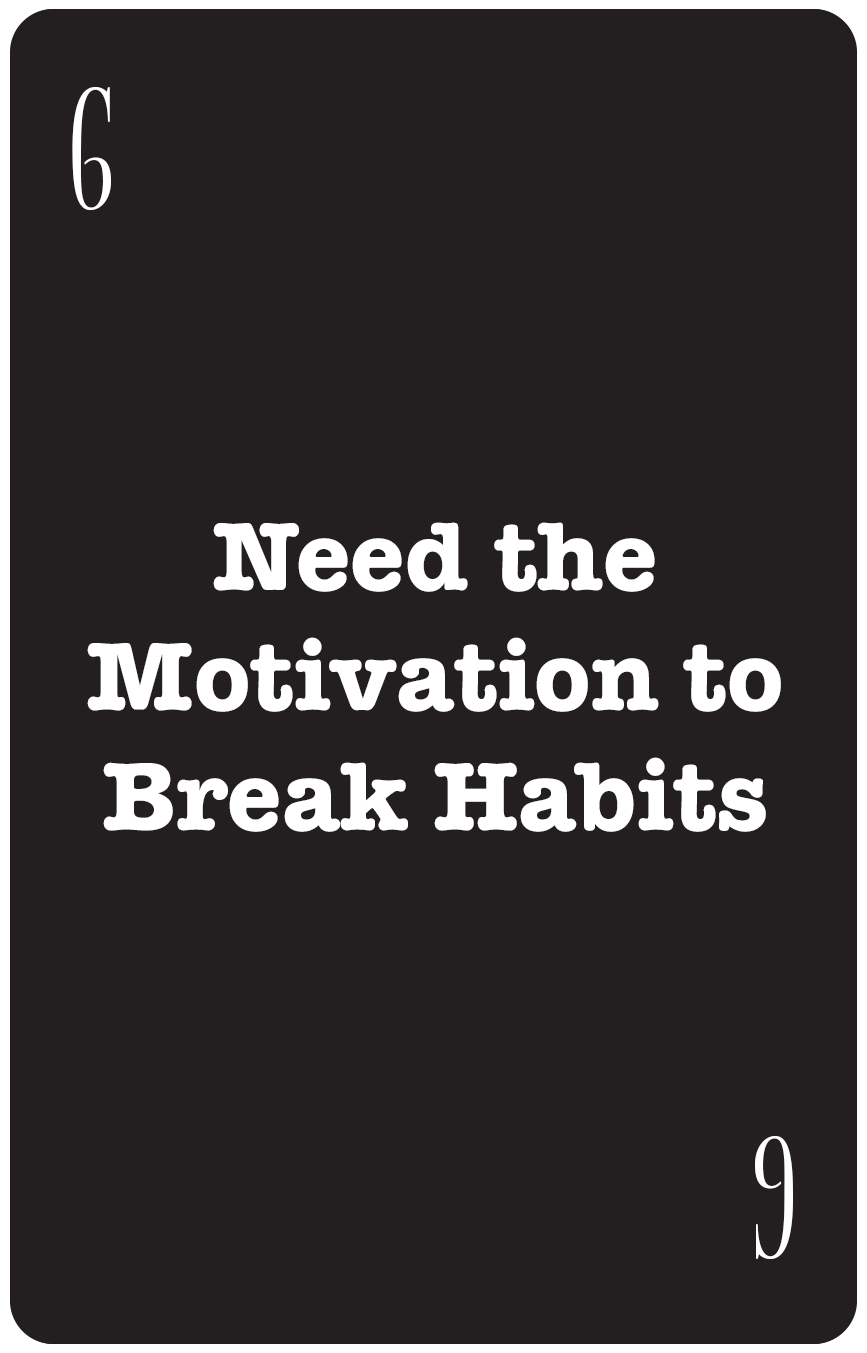
Consumers might flirt with the idea of change, but it’s easier (and less risky) to not change.
Scientists have a term for this: Status quo bias, and it’s defined as a person’s innate preference for not doing something different from what they’re doing today. So, while you may think you are losing sales to an annoying competitor, in reality, you’re likely losing to inertia.
In the graphic below, the grass is inertia:

Shoppers use creative tricks so they don’t have to buy your breakthrough product. Two creative tricks:
A: Ignore the problem
B: Use workarounds
Having a killer sales pitch is pointless if we can’t create a bridge connecting the shopper’s current state to their future happier state where they’re using your invention.
Was this section about breaking habits clear? /
🙌
Uh oh! Let's get in touch so I can explain this better.
We'll talk soon!
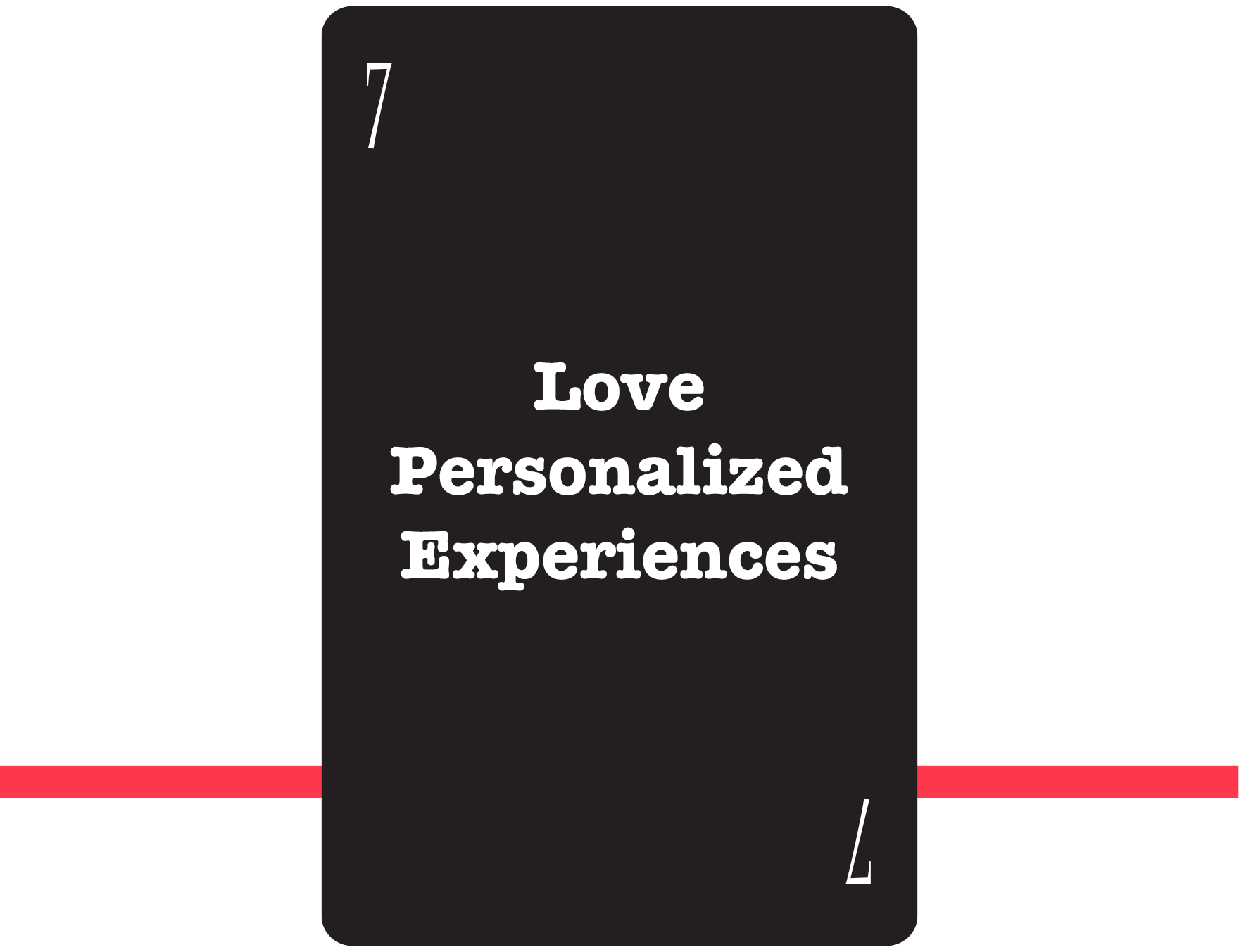
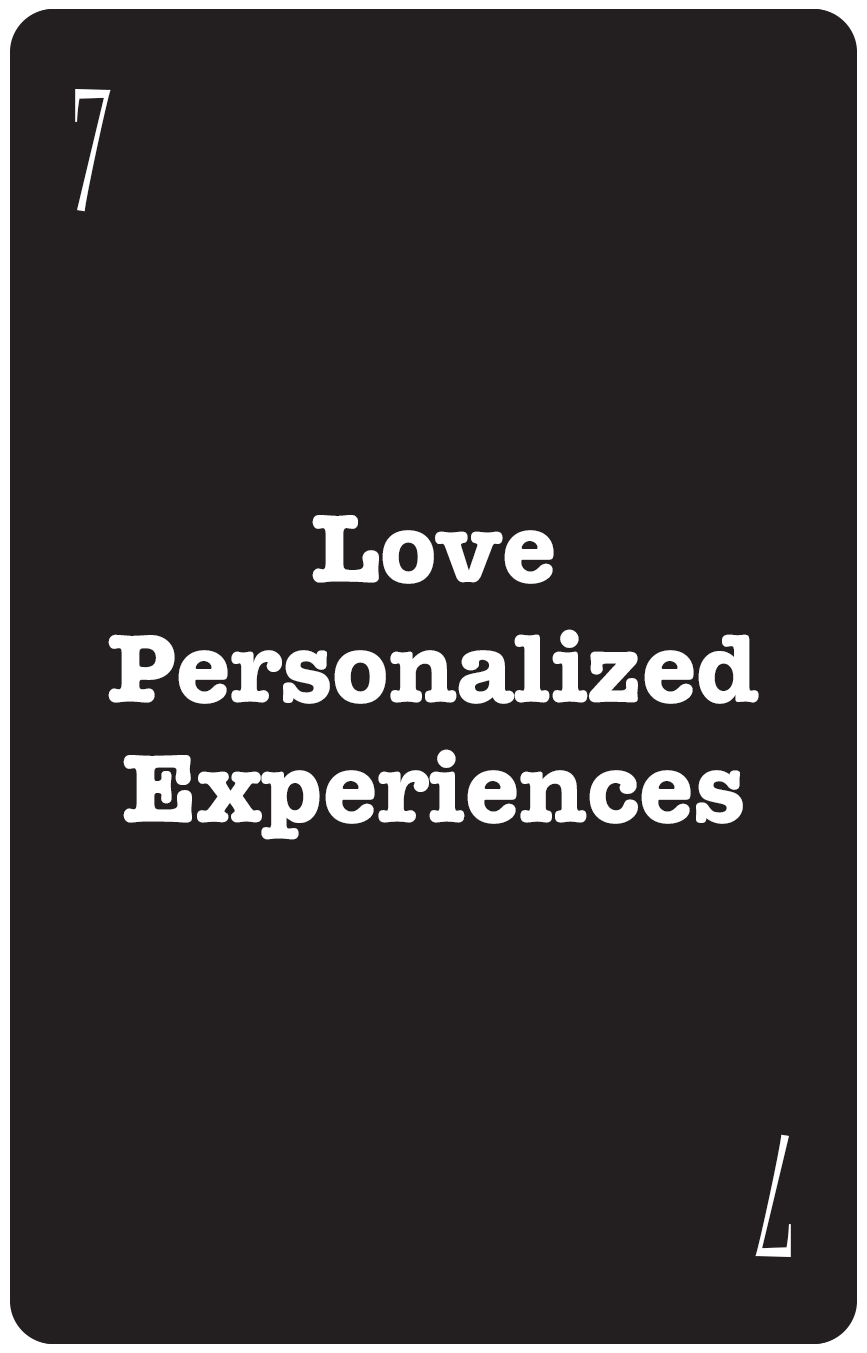
There is a way to write so the reader feels the product was made for them.
The trick is to talk about second-order things related to the purchase. For example, say you sell a premium car polish that’s 30% more expensive than the next option.

If I was making guesses about the person who buys this expensive polish, I’d say:
They love their car and believe it deserves the best. Their family probably thinks it’s a little silly to pay a premium for a car polish but our buyer does it anyway because taking care of their car is one of the few things in their life that isn’t for sharing; it’s something just for them.
After making these guesses, I’d create a pitch with this theme:
Sharing is good, and we share so much of our lives.
But it’s OK to have that one thing that’s just ours.
It’ll feel like magic to the shopper because they didn’t share this detail about themselves—you just connected the dots.
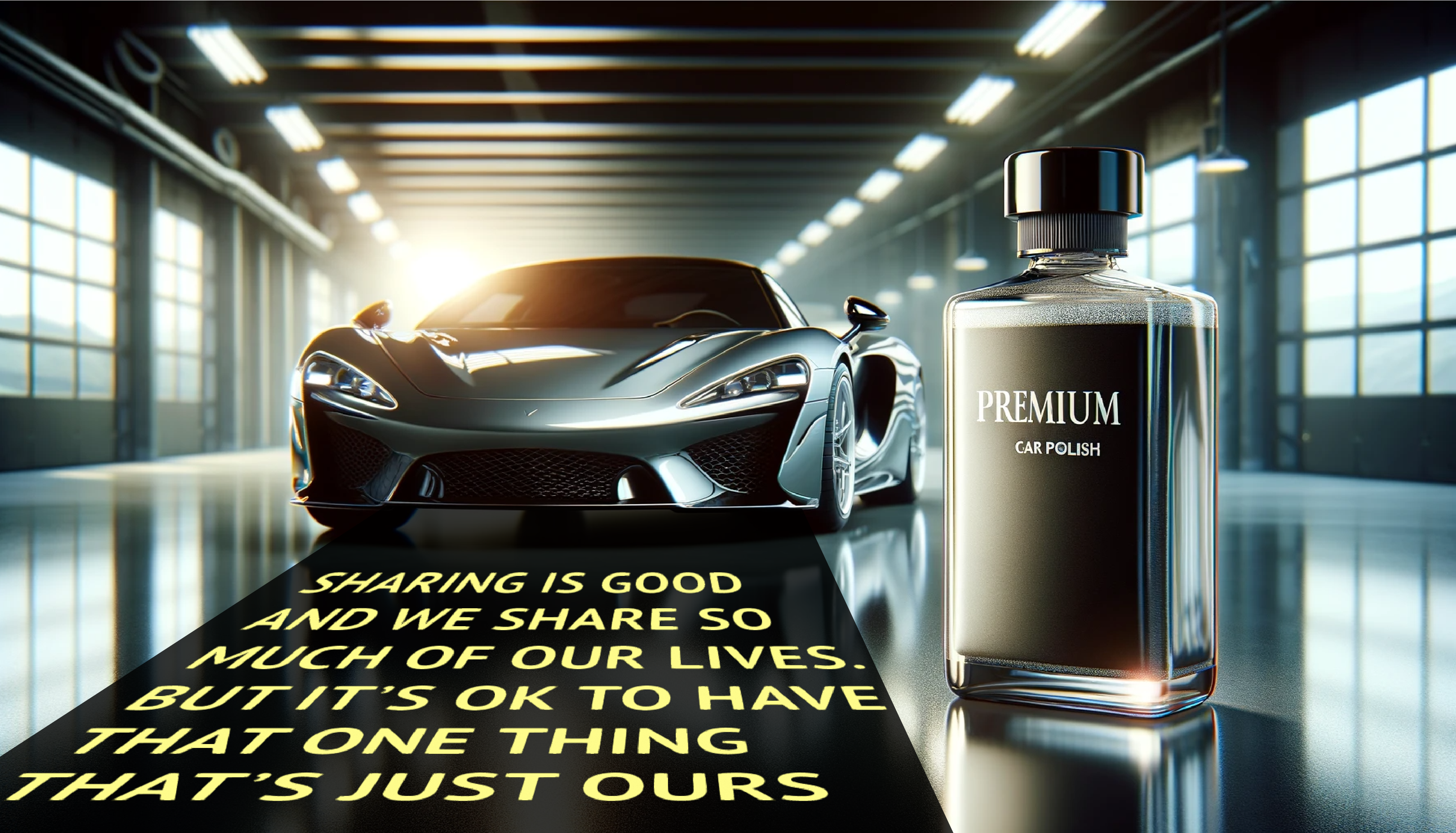
Connecting the dots makes the conversation feel personal.
Does the car polish example make sense? /
🙌
Uh oh! Let's get in touch so I can explain this better.
We'll talk soon!
To dig deeper, click here: Personalized Experiences.
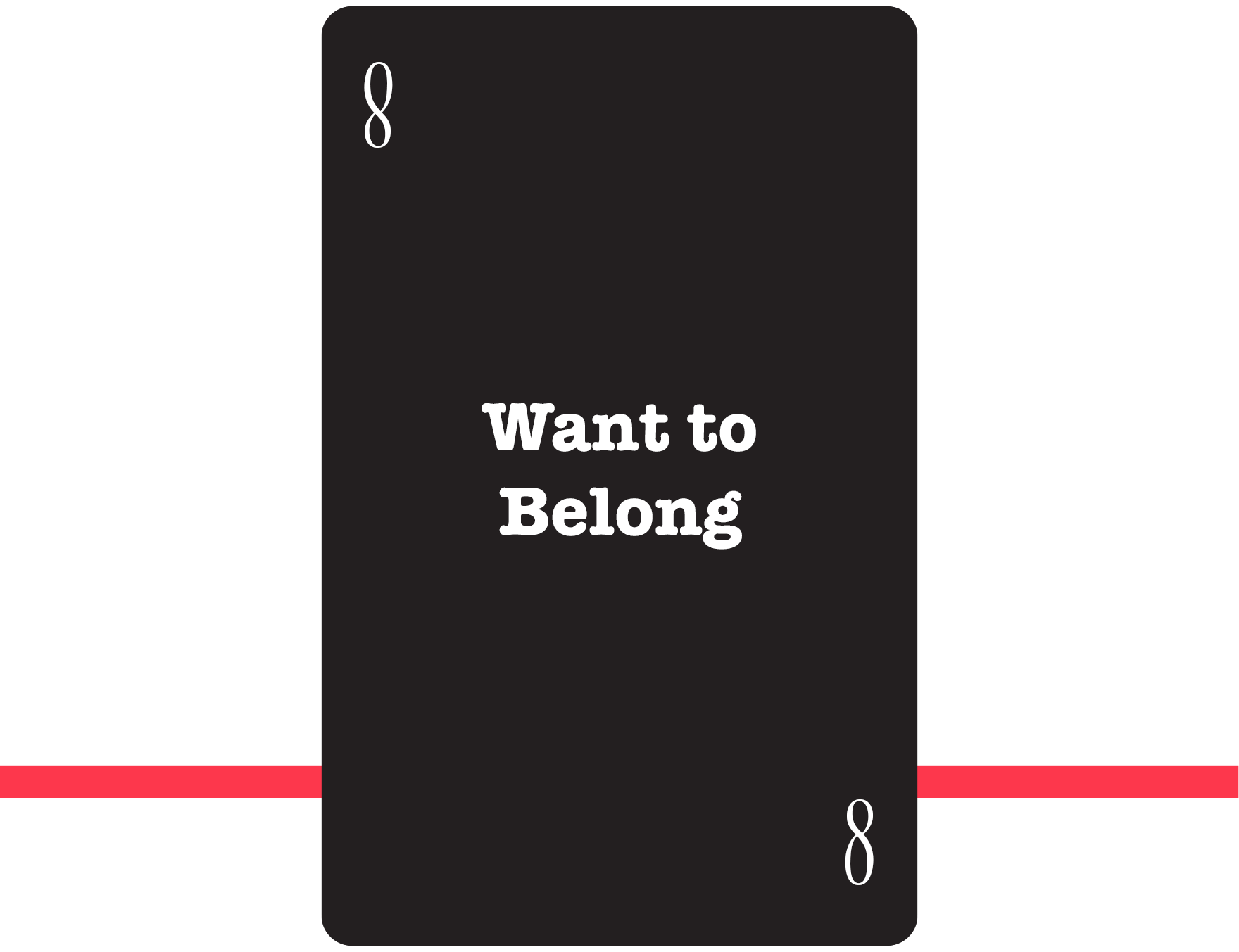

For most of human history, we lived in small communities.
Humans invented farming around 12,000 years ago. Before that—for around 190,000 years— we lived in small tribal groups of no more than 100 people. Source.
We live in larger communities today but still connect with tribal identities. It’s core programming, and we can’t help it.
And your Point of View (POV) communicates your tribal identity.
It’s a public statement about what you stand for.
Many eCom businesses prefer not to talk about their true point of view for fear of alienating a subset of their audience.
But not talking about it does more harm than good.
Agree?
Yes
— or —
No
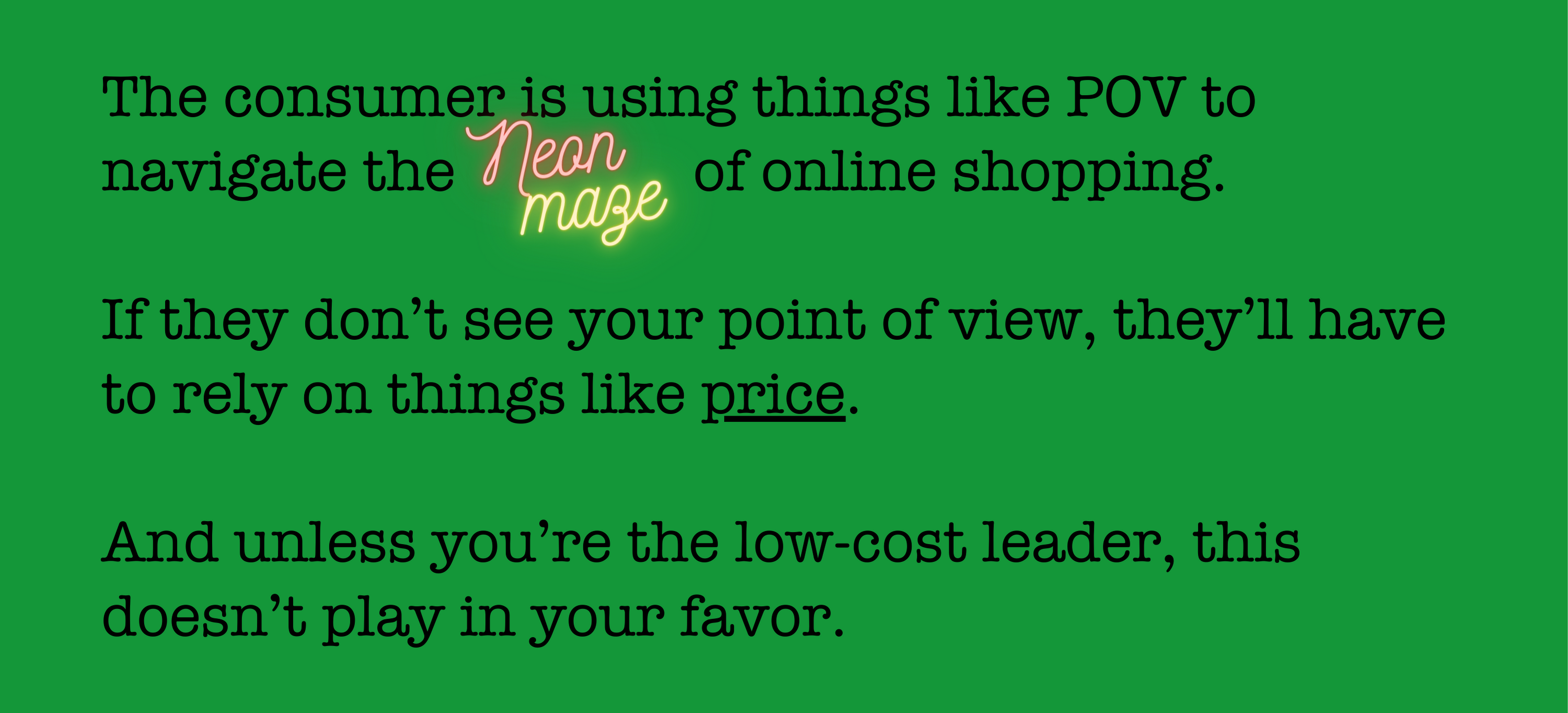
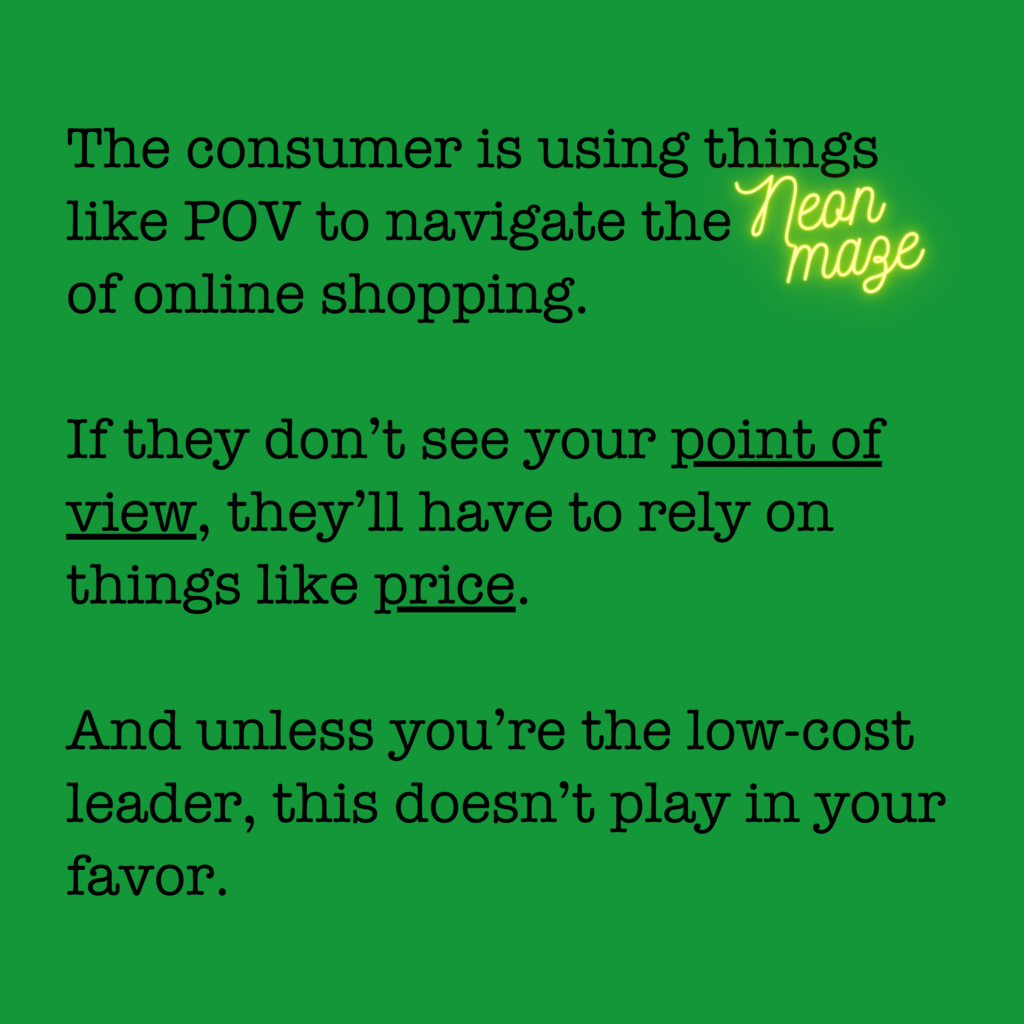
POV example: Sir James Dyson, the founder of Dyson, said, “I just think things should work properly.”
This is their brand’s POV, how they see the world. People who connect with this view relate to the Dyson tribe.
To dig deeper into this topic, read this article: Point of View (POV).
Is this explanation for wanting to belong clear? /
🙌
Uh oh! Let's get in touch so I can explain this better.
We'll talk soon!

Since you're liking this content you're gonna love the conversion ideas I share in my weekly newsletter. Signup below. If it isn't as good as I'm making it sound unsubscribe with one click.
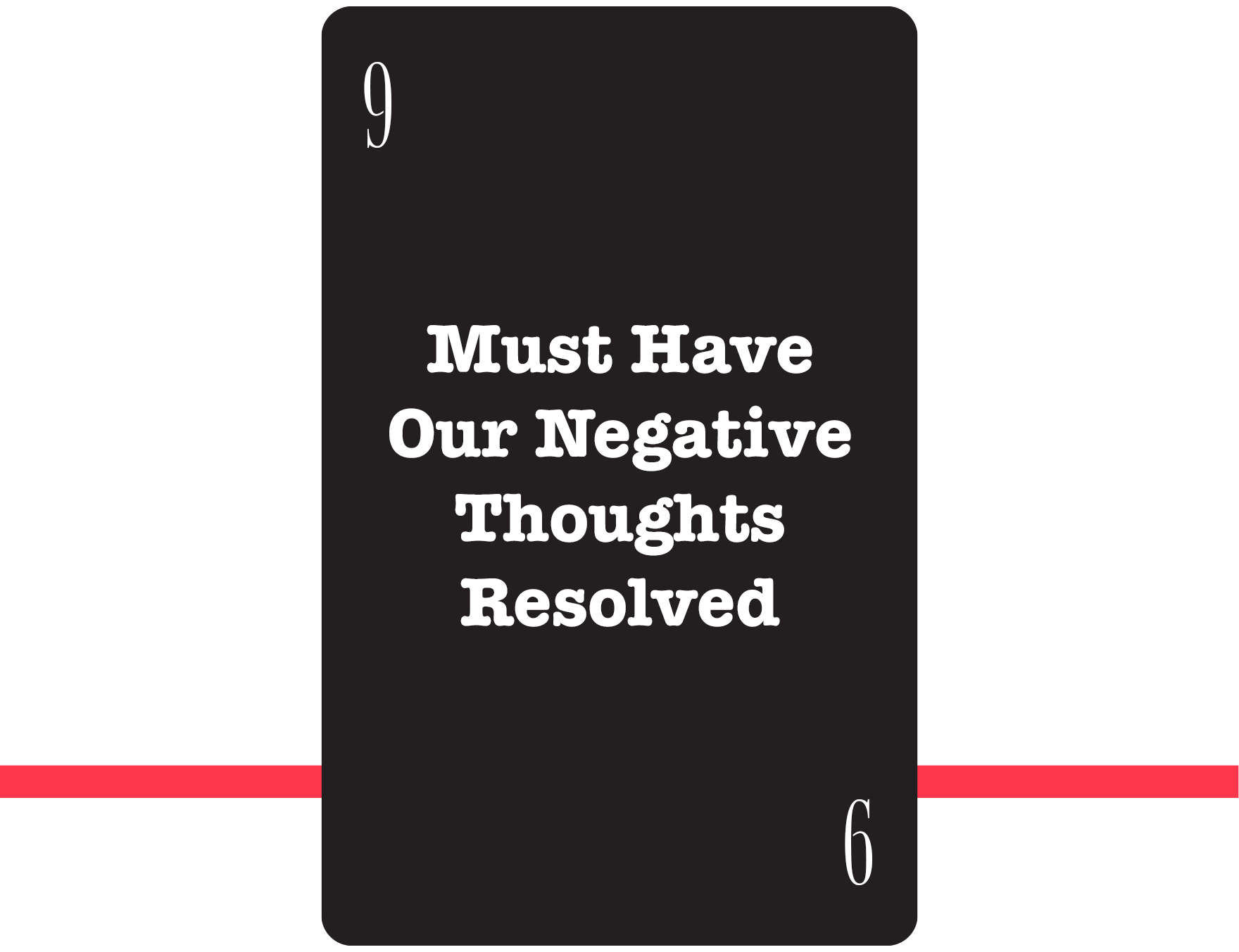

As buyers are going through our sales pitch their brains throw up negative thoughts to counter our marketing claims. This is a protective mechanism.
If many negative thoughts remain unresolved by the time they reach the bottom of the pitch, it could will derail the sale.

This is why, as marketers, we need to anticipate and address negative thoughts.
Four things trigger negative thoughts:
— Missing features
— Inferior features
— Price
— Confusing elements
Go through your product page sales pitch and ask yourself:
— “Could the reader perceive something as a missing feature?”
— “Could the reader interpret something as an inferior feature?”
— “Is it possible they might have concerns about my prices?” The price is a huge deal. It’s the 🐘 in the room, which is why we have a whole article on the subject: Increase Conversions With Price Justification.
— “Is there anything on this page that might confuse my visitor?”
In the list above, for any item where the answer is yes, add an explanation to stop the negative thought the moment it arises.
Example
The year was 1906, and Van Camp had a problem.
Their evaporated milk cans weren’t selling.
Unlike regular milk, evaporated milk is sterilized to prevent it from going bad.
Unfortunately, that sterilization imparts an unexpected almond-flavored aftertaste that was turning off customers.
Their advertising agency had done a great job kicking off inquiries by pitching evaporated milk— a relatively new category— with the catchy Now a cow in your pantry headline.
Now, they had to figure out how to address the strange aftertaste puzzle.
So they did a karate chop and converted the perceived flaw into a benefit.
Here’s the copy they came up with:
Be sure and taste the milk and see if it has got that almond flavor. If it has not the almond flavor, it is not the genuine.
Sales soared 30%.
Taken from the book:

Was this section about resolving negative thoughts clear? /
🙌
Uh oh! Let's get in touch so I can explain this better.
We'll talk soon!
Examples
So that was the overview. Now, I am going to show you a series of practical examples of how these 9 truths can be applied to build conversion-maximizing sales pitches for DTC brands.
Example 1
The first example is for a site that sells high-quality compression wear for women. Ready?




Comments 46
Great article ! The copywriting was so goodI forgot I was reading. It felt more like I was talking to an old friend who truly gets it!
ReplyRishi Rawat
Gee, thank you!
ReplyThis was such a great read! So insightful. Thank you!
ReplyRishi Rawat
Glad you liked it, Kaitlyn!
ReplyAmazing article. Love your work both on LinkedIn and YouTube. Thank you!
ReplyRishi Rawat
Thank you, Pat.
And for those interested our YouTube channel (where we discuss conversion strategies) is here: https://www.youtube.com/channel/UC_NJ5dAAuG0zhG9NHNp–hw
ReplySeamless illustration of the 9 core principles of online shopper’s interest retention.
ReplyVery tactfully applied those principles in the article itself.
Intriguing and eye opening.
Love the article and case studies. I’ve been following and enjoying your ‘buyer’s psychology’ posts. #3 and 7 resonate with me more 🙂
ReplyRishi Rawat
Thanks, Rashmi. I’m glad you like the content. Means a lot.
ReplyLove the work man! – It’s very evident that you spend a lot of time deep diving and thinking into the tricks to help boost conversion.
Bookmarking the blog now!
ReplyRishi Rawat
Thanks, Amber. Appreciate the comment. I guess this is what happens when a marketer obsesses over one thing.
ReplyHi Rishi,
Regarding your section on ‘surprising details,’ do you recommend focusing on surprising details about the product category or topic (in your example, air quality) or the product being sold (using this example, an air purifier)? Or is it best to combine some from both areas?
ReplyRishi Rawat
Hi, Christian. My recommendation is to identify aspects about the problem that consumers find most valuable, but also don’t know enough about, and present tons of interesting data about those topics. Presenting interesting details has lots of benefits:
1: It positions you as an expert.
2: It’s giving people FREE value. This activates reciprocity, where, on receiving that free information, the user is compelled to reciprocate. Often that reciprocation comes in the form of signing up for your newsletter or purchasing your product.
3: It breaks up reading fatigue. Our brains are power hogs. When the prospect is reading the sales copy, they start getting fatigued. Surprising details act as mini KitKat breaks, giving them the energy they need to continue reading. And people who read our entire sales pitch are 10x more likely to buy.
ReplyI cut my email subscriptions to 3. You made the cut. Your insights are actionable! Thank you.
ReplyRishi Rawat
Hi, Troy. That means a lot. Thank you 🙂
ReplyI have read these 9 truths so many times they’re etched in my brain. They’re applicable to virtually everything I write for clients, from a social media ad to a landing page to an email. Thank you Rishi, I’m on your list for life!!!
ReplyRishi Rawat
Hello, Laurel. I am so happy the nine truths have given you value. I use them for every piece of copy I write 🙂
ReplyI have had the privilege to
ReplyWork with Rishi on my website and after he put some magic touches my visitors went from spending 3-4 Minutes to 7-9 minutes outcome more sales !!! Thank you Rishi!!
Javier Virgen
Founder
GLOSSBOSS
Rishi Rawat
Hey, Javier. So nice to hear from you. I look forward our future collabs.
ReplyI love how you have distilled conversion factors down to 9. Kinda line Cialdini’s 7 persuasion factors but much more targeted. I’ll be keeping this page handy while crafting landing pages and product pages for ecommerce. Thanks for sharing so many great insights over the years!
ReplyRishi Rawat
Thanks, Joe. The list is yours to keep 🙂
ReplyThis article distills essential, yet non-obvious truths about human psychology. Fantastic work, Rishi!
ReplyRishi Rawat
Thank you, Clemence. Means a lot coming from you 🙂
ReplyRishi: I always learn something valuable from your posts. Thank you for your commitment to being our teacher.
ReplyNice post Rishi.
Thanks for sharing such valuable details!
ReplyGreat article thanks Rishi. You are one of the few people I have come across online who think about converting, or on site sales, in a way that makes sense. I always enjoy getting your emails and find all your content very helpful
ReplyRishi Rawat
Check your inbox 🙂
ReplyI come back to this list over and over again. I am always so impressed by the thought you have put into why people buy. So many marketers and copywriters parrot the same dozen ideas they’ve seen others parrot before. You put in the work to come up with a creative, original list that crushes the competition. 👏👏👏
ReplyRishi Rawat
Hey, and you helped shape the list, so thank you.
ReplyThis post is fabulous! thanks for sharing.
ReplyThis is very deep but worth implementing.
ReplyThank you for the recommendations to our site
Great info BUT I’m always curious the impact of a known brand on CVR? Does one of these truths address that? When we see underperformance on a website we always wonder first – would this same offer and landing page convert if it was coming from a known brand? Can an unknown brand compete with known brands?
ReplyRishi Rawat
Hey, Craig. Great Point. There is no doubt that a known brand has the conversion upper hand. But new brands are born every day and even known brands started somewhere.
Busting the objection of “I’ve never heard of this brand before” is covered in tactic number 9 (Must Have Our Negative Thoughts Resolved).
Here’s a potential angle an unknown brand can use:
The fact is, we can’t outspend the biggest advertisers. Their ads are everywhere, which is probably why you’ve seen them way more than you’ve seen us. And while we can’t match their ad budget, we can triple down on improving these very specific aspects of the product: [here you’ll list these details where your solution is clearly better].
Something like that.
ReplyReally brilliant advice Rishi – you really have figured it all out -Thank you.
Replyp.s. I noticed your emails often go out on Mondays. That is my busiest day and it might be true for others as well. Wondering if it might be worth trying a Thursday on an A/B test? Just a thought!
Rishi Rawat
Hi, Julie. Sending emails on a Tuesday an an A/B test is a great idea. The only challenges that all of my newsletter sign up branding is for a Monday morning email 🙂
ReplyThank you Rishi for what you do, and for being generous with sharing everything you’ve learned. I read the Honeylove case study after reading these 9 truths and was ready to get a bowl of popcorn, hooked on the storytelling you came up with. Highly recommend folks sign up to Rishi’s newsletter if you haven’t already!
ReplyRishi Rawat
❤️
ReplyGreat article but I have a thought about something that may be hurting your comment conversion: you have to scroll all the way to the bottom of all of the comments to leave one. If I hadn’t received your email, I would have thought comments were closed (it felt strange to have to scroll so far) and simply not left one. Hope that helps, love your content!
ReplyI think 2 is the one I find myself going back to time and time again. Great article thanks
ReplyRishi Rawat
I’m so glad, Adrian 🙂
#2 is my go to conversion move.
ReplyI think 2 is the one I find myself going back to time and time again. Great article thanks
ReplyI love the content, but had to force myself to get through the first few paragraphs with all the distracting emojis and unicode text. That stuff really disrupts the flow IMHO. Maybe I’m the outlier?
ReplyRishi Rawat
Hi, Dana. That’s really good feedback. I’ve gone and removed the 🧠 emoji. Thank you.
ReplyI loved it. It was really engaging. I couldn’t stop reading and learning. Thank you. You are a genius.
ReplyRishi Rawat
Thanks, Simona. Glad you liked it.
Reply“Great article! Especially the point #7 about love personalized experiences In my experience working with e-commerce businesses, clear website navigation and search functionality are important for a smooth customer journey.
Reply